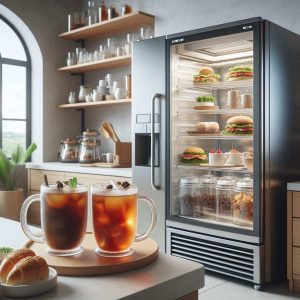 Vacuum insulating glass (VIG) is becoming more popular not just in construction, but also in the food and beverage world. Its ability to maintain temperatures, whether hot or cold, has made it a super glass and useful in many everyday products. From wine glasses to restaurant windows, this type of glass can help improve how food and drinks are stored, served, and enjoyed. Learn how it’s also transforming architecture and green building at the vacuum-glass(.com) website.
Vacuum insulating glass (VIG) is becoming more popular not just in construction, but also in the food and beverage world. Its ability to maintain temperatures, whether hot or cold, has made it a super glass and useful in many everyday products. From wine glasses to restaurant windows, this type of glass can help improve how food and drinks are stored, served, and enjoyed. Learn how it’s also transforming architecture and green building at the vacuum-glass(.com) website.
What Is Vacuum Insulating Glass?
Vacuum insulating glass is made up of two panes of glass separated by a vacuum layer. This vacuum works as a barrier to heat and cold. Since there is no air between the panes, heat has no easy way to travel from one side to the other. This makes the glass excellent at keeping things either warm or cool.
The technology behind it is similar to that used in thermos bottles or vacuum flasks. The vacuum helps maintain the temperature of whatever is inside. While vacuum glass is often used in building windows, it is now being adopted in food and drink applications.
How It’s Used in Food and Drink Settings
1. Serving Hot or Cold Drinks
Cups and mugs made with vacuum-insulated glass help maintain the temperature of drinks for a longer time. For example, your coffee stays hot without the need to reheat it. Cold drinks like iced tea or cocktails stay chilled longer without needing more ice, which keeps them from getting watered down.
This type of drinkware is especially useful in cafes, bars, and restaurants. It improves the customer experience by keeping drinks at the right temperature from the first sip to the last.
2. Storing Perishable Food
VIG is also being tested in refrigeration units and display cases in grocery stores and restaurants. Since vacuum glass can maintain consistent internal temperatures, it can help keep perishable food fresh without overloading the cooling system. The reduced energy usage also helps save on power bills.
For example, high-end wine coolers and cheese display cases are starting to use vacuum glass doors to help stabilize internal temperatures and reduce condensation. This protects the quality of the products inside while allowing customers to view them clearly.
3. Food Packaging and Takeout Containers
Some new packaging designs are exploring how vacuum glass, or at least similar layered insulating materials, can be used in food delivery. Think of a takeout soup container that stays hot all the way to your home without leaking or burning your hand. While not all of these use true vacuum glass yet, the concept is influencing the design of better food packaging materials.
Benefits for Commercial Kitchens and Restaurants
Restaurants are always looking for ways to reduce waste, save energy, and improve customer service. Vacuum insulating glass supports all three goals.
- Lower energy use: VIG reduces the need for constant heating or cooling. For display units, this means less power is needed to keep food at the right temperature.
- Better hygiene: The sealed glass surface is easy to clean and doesn’t fog up, which is ideal for kitchens that need to show food to customers.
- Improved presentation: Clear and sleek, vacuum glass helps products look good. Whether it’s a bakery display or a sushi case, it adds a modern, professional look.
Some restaurants have even started using VIG windows between the kitchen and dining area. This helps reduce heat transfer, keeping the dining room cooler while giving guests a peek into the cooking process.
Everyday Products You Might Already Be Using
Many people already use products with vacuum-insulated glass at home, even if they don’t realize it.
- Double-walled glass mugs for coffee or tea are often made using this principle.
- Insulated wine glasses and beer tumblers use a vacuum layer to prevent condensation and keep drinks cold without freezing your hands.
- Thermal food jars and containers are also benefiting from similar designs that mimic the effectiveness of vacuum glass.
These are perfect for outdoor picnics, long workdays, or anytime you want your food or drink to stay at the right temperature.
A Sustainable Choice
Aside from comfort and convenience, VIG also supports sustainable food practices. It reduces the need for plastic wraps, extra ice packs, and additional heating or cooling. Because it helps control temperature naturally, it cuts down on wasted energy and helps food last longer.
In cities where energy costs are high, or in climates where temperatures fluctuate often, vacuum glass can be a helpful part of reducing the carbon footprint of homes and businesses.
